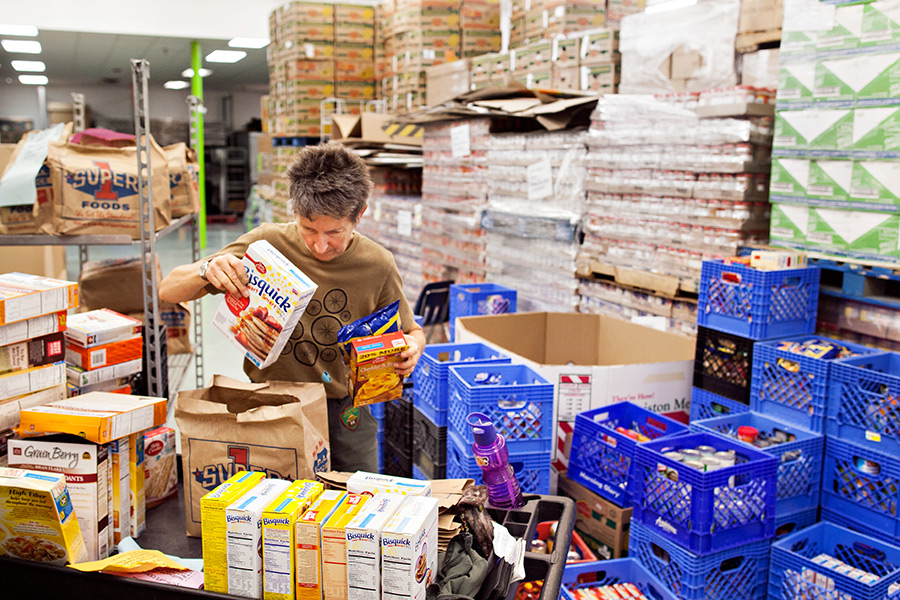The Montana Department of Public Health and Human Services announced today that February benefits for the Supplemental Nutrition Assistance Program (SNAP), formerly known as food stamps, will be issued early to thousands of recipients across the state due to the partial federal government shutdown.
In a statement, Sheila Hogan, director of the state Department of Public Health and Human Services (DPHHS), said her department is working diligently to load benefits onto SNAP recipients’ Montana electronic benefit transfer (EBT) cards on Jan. 17 for the month of February. Typically benefits are issued the first week of the month.
The DPHHS stresses that the “early release of benefits does not constitute additional funding to individuals, but simply an early issuance of February benefits.”
“It will be vitally important for people to understand that this issuance is early, not extra,” Hogan said.
The early issuance, alongside other government benefits due to the shutdown, could have ripple effects, impacting social-service providers, grocery stores, food banks and more, with concerns raised over the potential for recipients to run out of benefits far earlier because they don’t understand they won’t receive more benefits in February, are thrown off of their usual budgeting routine or don’t know about the early issuance.
“This is unprecedented; it was a complete shock to all of us,” Jamie Quinn, director of the Flathead Food Bank, said, adding that food pantries in the valley, which learned of the early issuance this morning, are bracing for the possibility of clientele swelling in mid or late February. “All of the food pantries are concerned because we know people are going to use that quicker because it’s being released quicker.”
“We will all do our best to feed the public,” she added.
Quinn said public awareness will be paramount as SNAP recipients receive the early benefits on Jan. 17 and must then stretch the funds through February. If they run out, they’ll likely end up at local food banks.
“We don’t want people to think they’re getting double,” she said. “If they know about it ahead of time, they can budget through it. But if they’re not aware of it, they’ll spend through those dollars because they’re not actually aware that’s their February allotment.”
The state health department says SNAP recipients are “encouraged to space their food purchases out throughout the month of February, rather than making mass purchases.” The department says it’s communicating the early issuance to partner organizations, such as local food banks, grocery stores and social-service agencies.
Quinn said about 20 to 25 percent of all dollars spent at grocery stores are SNAP benefits, meaning grocery stores will be watching the early release of funds carefully. A manager at a Kalispell grocery store said he’s been in the grocery business since 1980 “and this is the first time I’ve seen this.”
“The only thing that concerns us in the grocery store business is making sure we have enough product on hand when (SNAP benefits are paid out),” he said, with stores usually planning for that to happen at the beginning of each month. “It does spike our sales, just like a pay day.”
“We’re fortunate that we can react fairly quickly, but it’s just kind of hard to plan now because you don’t know what February is going to bring,” he added. “We’re all guessing.”
Current SNAP recipients who have already been determined eligible for February do not need to take any action to receive their benefits, the state health department states, but current clients who are in the process of renewing or applying for benefits are encouraged to submit their documents as soon as possible.
The U.S. Department of Agriculture (USDA) instructed states to issue benefits early because of the shutdown as part of a plan announced last week. According to a press release from the USDA, when the department’s funding expired on Dec. 21 at the start of the shutdown, SNAP benefits for January had already been fully funded.
Sonny Perdue, the U.S. secretary of agriculture, said the Trump administration was then able to secure funding for February’s benefits through a provision of the Continuing Resolution (CR), which expired in late December but “provides an appropriation for programs like SNAP and child Nutrition to incur obligations for program operations within 30 days of the CR’s expiration,” the USDA stated.
“To protect SNAP participants’ access for February, USDA is working with states to issue February benefits earlier than usual,” the Jan. 8 release stated.
The USDA said it has also ensured that other major nutrition-assistance programs have sufficient funding to continue operations, including child nutrition programs such as school meals and after-school programs, which have funding available through March. The Special Supplemental Nutrition Program for Women, Infants and Children (WIC) has prior-year funding that the USDA began providing to states last week to facilitate February benefits.
Other programs that provide “critical assistance to our nation’s food banks, the elderly, and Tribal nations, may continue to utilize grant funding provided prior to the lapse in appropriations,” the USDA stated, adding that commodity deliveries to those programs will continue.
After Jan. 17, DPHHS will continue to process new applications and will issue benefits through daily issuance as applications are approved. Hogan said the early issuance of February benefits will proceed even if the government shutdown ends prior to Jan. 17.
Recipients can call the Public Assistance Helpline at 1-888-706-1535. To check their account balance, recipients are encouraged to call the Montana Card Customer Service Help Desk at 1-866-850-1556.
